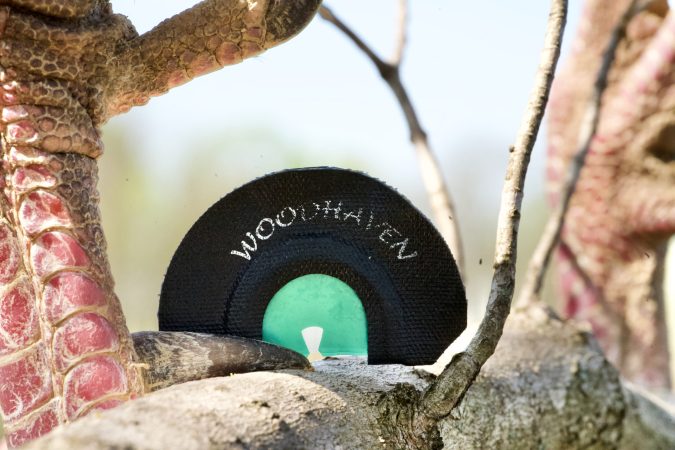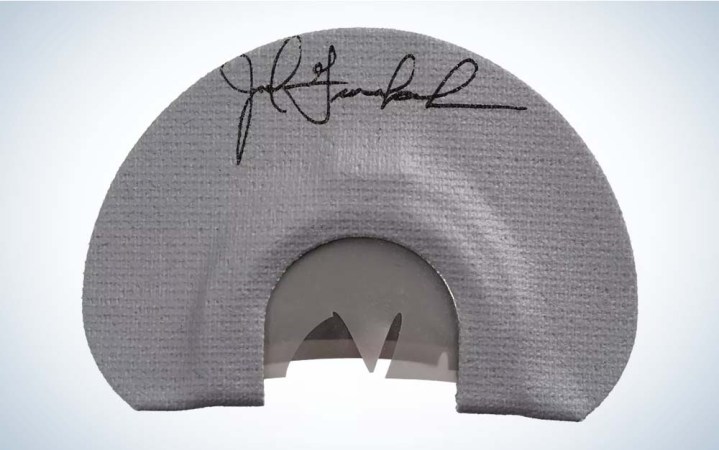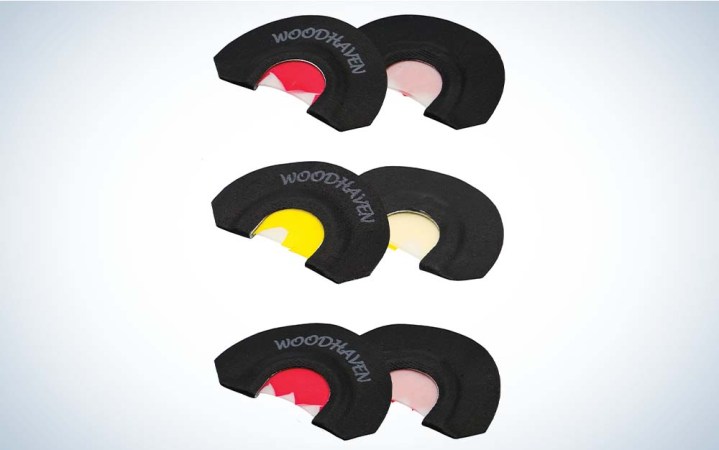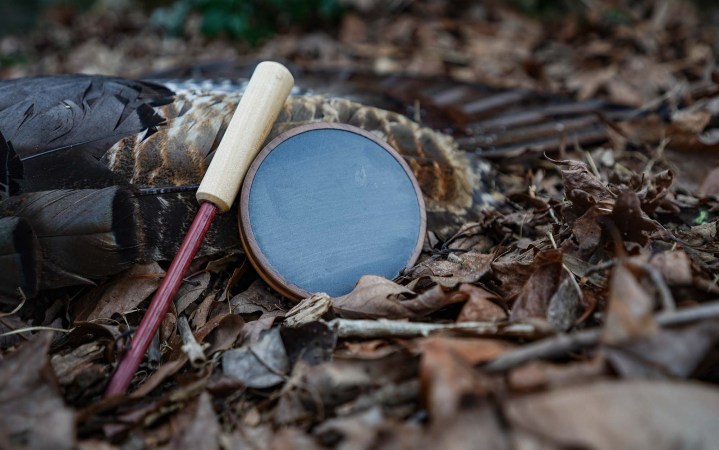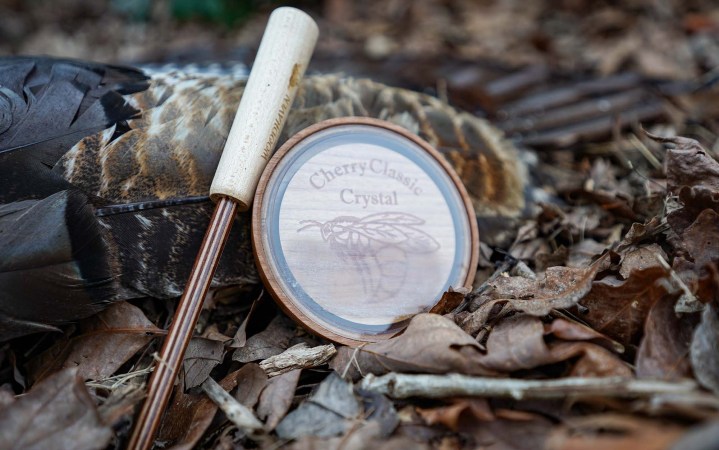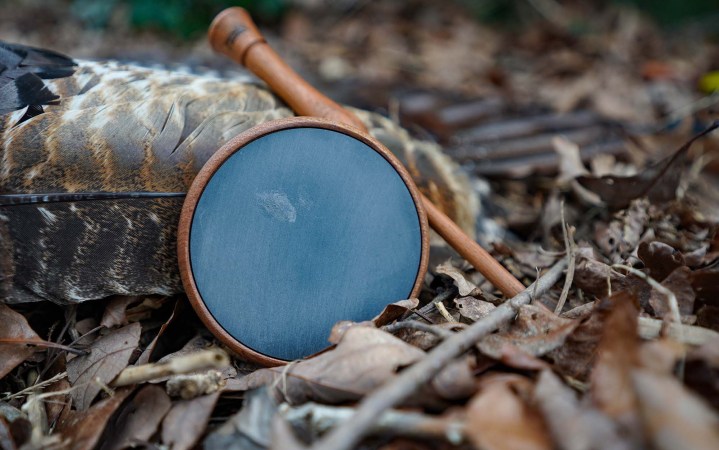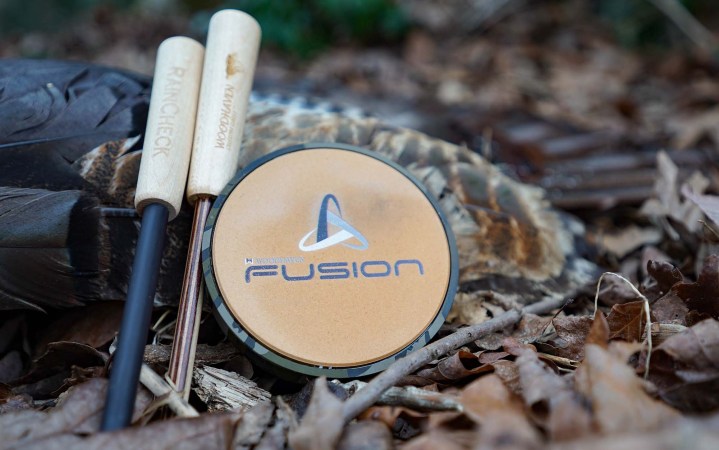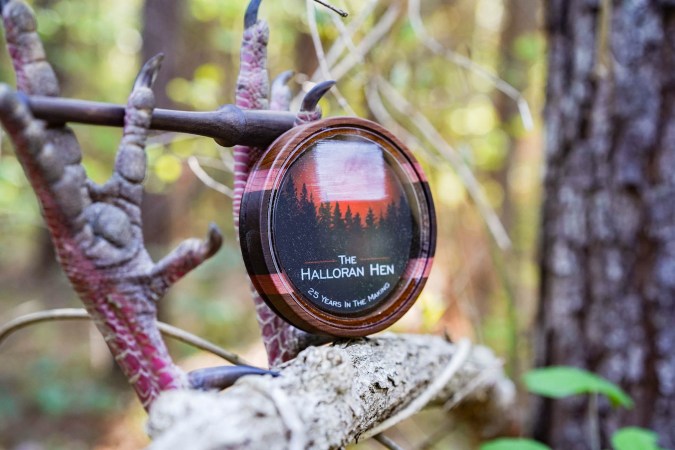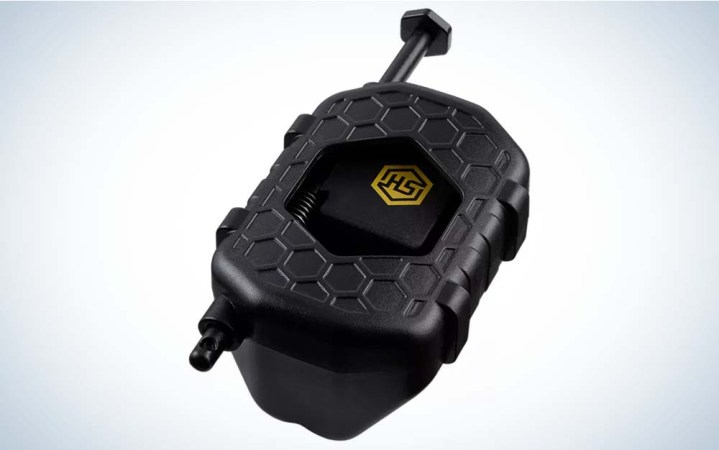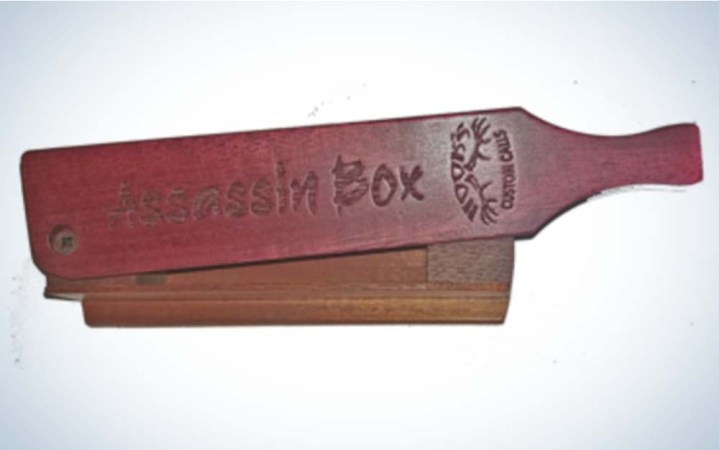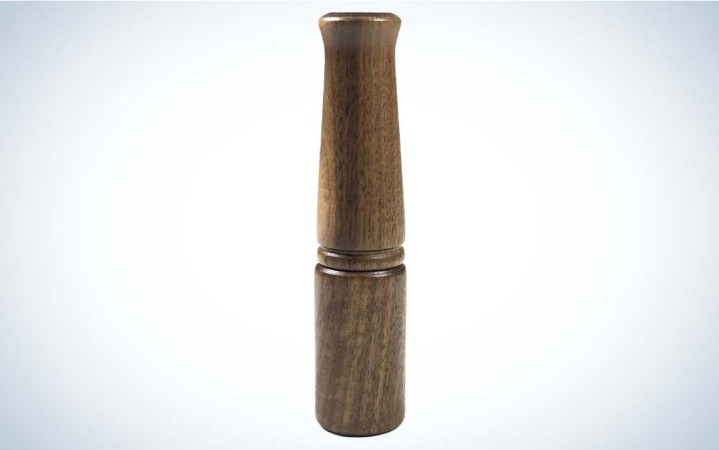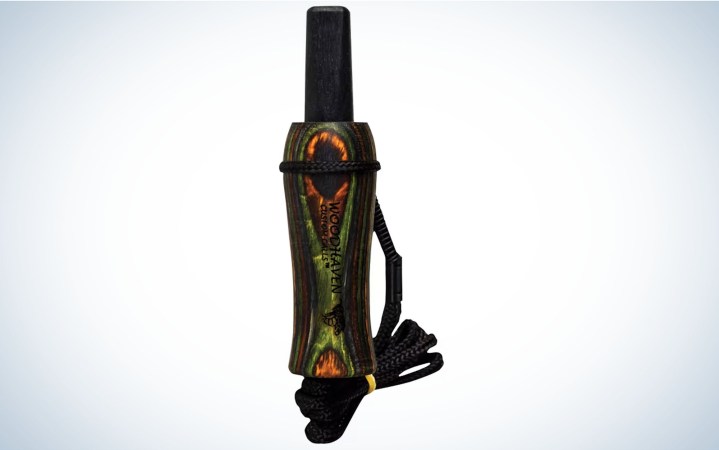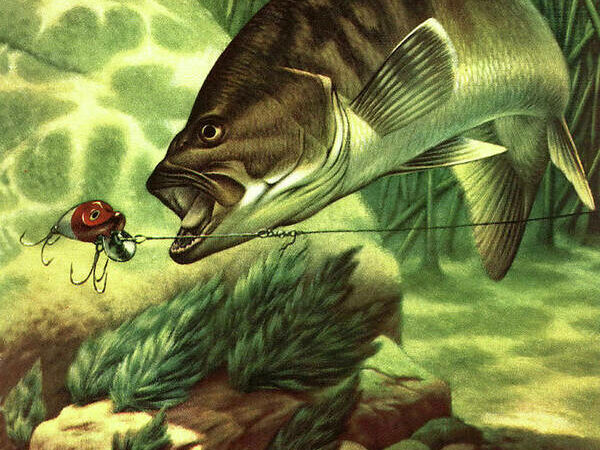The Best Turkey Calls of 2024, Tested and Reviewed
We may earn revenue from the products available on this page and participate in affiliate programs. Learn More ›
If coaxing an old tom into range is your goal this spring, you’ll need a turkey call or four in your vest. I tested the best turkey calls that cover almost every situation you’ll encounter this spring, so you can feel confident with any combination of these calls in your pockets.
You don’t need all these calls, but having a few will allow you to cover most turkey-calling scenarios. For example, loud box calls work great when you’re calling a turkey from a long distance, but they might not be ideal in close quarters when you’ve got a gobbler in sight, which is where mouth calls shine. Having a few of the best turkey calls lets you adapt to the situation and hopefully a shot at a bird.
- Best Mouth Call for Beginners: Woodhaven Ninja Ghost
- Best Mouth Call: Rolling Thunder: Josh Grossenbacher 3-Reed Combo Cut
- Best Mouth Call Multi Pack: WoodHaven Pure Turkey 3-Pack
- Best Slate: Esh Old Hunter Classic
- Best Glass: Woodhaven Cherry Classic Crystal
- Best Value Slate: Primos Rare Breed
- Best Small Batch Crystal: Halloran Hen by David Halloran Turkey Calls
- Best All-Weather Pot Call: Woodhaven Fusion Ceramic
- Best Box: Hook’s Custom Calls: The Assassin Box
- Best for Beginners: H.S. Strut Push-Button Call
- Best Locator Call: Hook’s Harrison Hoot’n Stick Owl Call
- Best Crow Call: WoodHaven Real Crow
Best Turkey Calls: Reviews & Recommendations
Best Mouth Call for Beginners: Woodhaven Ninja Ghost
Key Features
- Three-reed design
- Clean, realistic sounds
- Versatile ghost cut for easy use
Pros
- Super easy to use
- Sounds like a real hen
Cons
- Not the most dynamic call for experts
Outdoor Life editor-in-chief, Alex Robinson has been turkey hunting the Midwest for more than 20 years, but he picked the Woodhaven Ninja Ghost because it’s an ideal call for hunters who aren’t expert callers.
“It took me years to get even halfway decent using a mouth call,” Robinson says. “I burned through probably a dozen different brands and styles of mouth calls and never achieved a real authentic yelp sound. Even so, I killed plenty of turkeys with friction calls and well-timed, sub-par mouth calling. Then, a few years ago I tried the Woodhaven Ninja Ghost. It’s the easiest call I’ve ever used. It takes very little air pressure and runs well even if I don’t have it positioned perfectly in my mouth.”
One of the Ninja Ghost’s strengths is its simplicity.
“It’s a straight-forward three-reed call with a small ghost-style cut in the middle of the top reed,” Robinson says. “The sound is crisp and not raspy (a lot of poor mouth callers struggle with overly raspy calls and end up sounding more like a slurring hen with a cough than a real bird). Most importantly, it kills turkeys. Last spring it brought seven gobblers to the gun,” Robinson says. Listen to the Ninja Ghost by clicking on the audio player below. —Adam Moore
Best Turkey Mouth Call: Rolling Thunder Game Calls Josh Grossenbacher 3-Reed Combo Cut
Key Features
- Three-reed combo cut
- Relief cut in middle reed
- Heavy latex
Pros
- Easy to work
- Versatile turkey sounds
- Hands free
Cons
- Not beginner friendly
This combo cut is one of the best turkey mouth calls and produces an easy roll-over from the clear first note of a yelp into the deeper, raspier second note, plus sharp, high-pitched cutting and cackles. Rolling Thunder is made by Josh Grossenbacher, the expert caller who used his own hand-made calls to win the 2015 World Championship Turkey Calling Contest and the 2017 Grand National Head-to-Head title. I’ve watched Grossenbacher run his calls on gobblers from Kentucky to Oklahoma, so I was excited when he sent me this call to test during spring 2021. I first used Grossenbacher’s Combo Cut during a bare-bones timber hunt in Wisconsin, striking a gobbler across a deep swamp and working the bird within range but just out of sight. Just as I expected to see the turkey, another gobbler charged in, and the longbeards began to fight. I knew the encounter was about to go south, so I rattled off some aggressive purring on the three-reed combo cut. One of the gobblers popped his head over a small rise, and I ended the hunt. I’m certainly not an elite mouth caller, but this call let me switch vocalizations seamlessly throughout the hunt while remaining undetected.
Best Turkey Mouth Call Multi-pack: WoodHaven Pure Turkey 3-Pack
Key Features
- Medium-size tape
- Three different cuts
- Durable reeds
Pros
- No movement required
- Relatively inexpensive
- Wide range of volume
Cons
- Requires practice
Mouth calls are arguably the most versatile turkey calls when you consider calling sounds, volume, and overall weight, and this three-pack from WoodHaven is no different. The Hammer T is cut on each side and lets you blow a clean front-end note, easy two-tone yelps, and clear clucks, purrs, and tree yelps. The design of this cut allows you to make these sounds without a ton of air. Even if you’re not a pro with a mouth call, you should find this one relatively easy to use.
The Hammer Tooth is like having two batwing cuts in one call, so no matter which side of your mouth you use, this call makes it easy to yelp even if you don’t have it positioned just right. Because of the loose reed construction, beginners may have difficulty producing more dynamic sounds.
The Modified Cutter has a loose three reed construction that makes it easier to blow than calls with more or tighter reeds, yet it’s just as dynamic. Even after heavy use, the tape on these calls doesn’t fray or wear out as quickly as other brands.
Last spring, I hunted with Steve Stoltz in Missouri. The first morning, he eked out a few ultra-soft tree yelps on the Modified cutter to a pair of roosted gobblers, and the longbeards wasted no time flying down and running to our setup. Only one ran away. Later that day, Stoltz huffed out some aggressive yelps and cutting to strike another pair of birds in a long draw. After a quick setup, he scored bird number two for the day.
Best Slate: Esh Old Hunter Classic
Key Features
- Walnut and cherry horizontal laminate pot
- Slate over glass
- Comes with a Dymondwood striker
- Lifetime warranty (Full refunds available within 90 days of purchase)
- Price: $97
Pros
- Great sound quality
- Excels at mid to close-range calling
Cons
- My sample had some fit and finish flaws
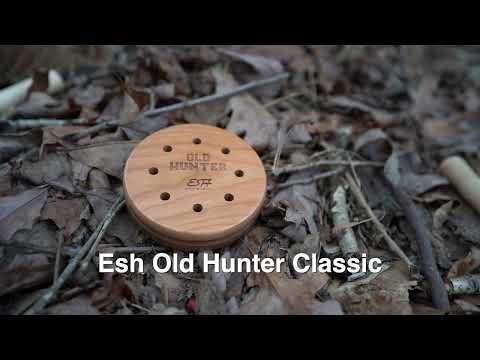
The Old Hunter Classic brings out the best sound qualities of slate through some innovative construction. Esh combines two of the best pot call woods, cherry and walnut, in a horizontal laminate. The cherry is at the bottom and walnut on top, unlike most calls that use a vertical lamination. They also use a glass soundboard and a Dymondwood striker. Those elements combined with quality slate produce a great-sounding turkey call.
The Old Hunter Classic isn’t as loud or high pitched as the Cherry Classic, but it’s not meant to be. Slate calls shine at convincing a tom to close the distance. Raspy, excited-hen yelps and cluck and purrs, are this call’s bread and butter.
My call has some minor but noticeable fit and finish issues, mainly rough spots and glue specs on the pot, which you don’t expect on a nearly $100 call. Yet, I love the sound quality, and the call is very nice overall. —Scott Einsmann
Best Glass: Woodhaven Cherry Classic Crystal
Key Features
- Includes two strikers, conditioning kit, and lid
- Can be customized with engraving or photos under the crystal
- Made from quarter-sawn cherry
- Also available in slate
- Made in USA
- Price: $95
Pros
- High pitched and raspy
- Loud
- Well made
Cons
- Can’t call as softly as others
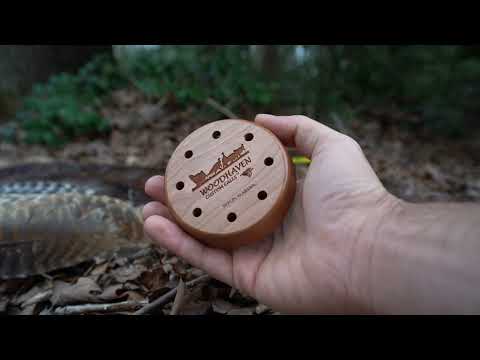
If you want to make raspy, two-tone yelps and aggressive cutts that reach the next ridge, the Cherry Classic needs to be in your vest. It produces complex notes compared to the one-dimensional sounds you get from lesser calls. It excels at yelps and cutts, but takes a little finesse for purrs. A tip for purring on this call is to move your hand up the striker, use very light pressure, and use a freshly conditioned area. Its overall high pitch allows it to kee-kee really well. Just move your striker toward the edge for kee-kees.
The quarter-sawn cherry is gorgeous, and the call as a whole is done beautifully. It’s a call worth every cent of its $95 price tag.
Another great crystal call is the Woodhaven Ninja Crystal, which has been my go-to for years. —Scott Einsmann
Best Value Slate: Primos Rare Breed
Key Features
- Wood pot
- One piece striker
- Also available with a glass surface
- Made in USA
- Price: $48
Pros
- Good build quality for the price
- Sounds great
- Excellent for making subtle calls
Cons
- Not very loud
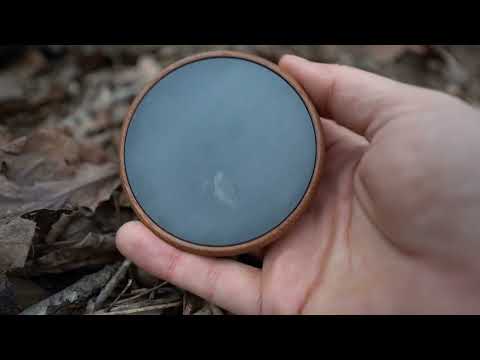
I tested two popular slate calls in the $40 to $50 price range, and when I pitted them head-to-head, the Rare Breed won by a landslide. It sounded significantly better and didn’t have the build issues of its competitor.
On its own merit the Rare Breed sounds great and does everything you’d want a slate to do. It excels at close to medium-range calling and delivers a realistic, raspy tone. Controlling the volume is easy, and I had very few issues with my striker slipping as I got aggressive on the slate. —Scott Einsmann
Best All Weather Pot Call: Woodhaven Fusion Ceramic
Key Features
- Includes all-weather and laminated striker
- Acrylic pot with camo finish
- Ceramic calling surface (Also available in aluminum)
- User-friendly surface
- Comes with Rain Check striker and Deluxe Striker
- Includes conditioning kit and lid
- Made in USA
- Price: $100
Pros
- Works in the rain
- Medium volume
- Easy to run
Cons
- Doesn’t get very loud
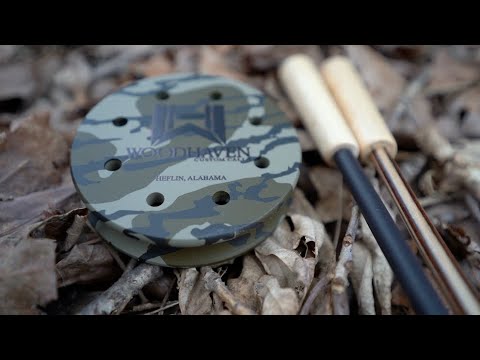
Rain and pot calls don’t go together. Once the surfaces get slicked, it can’t generate the friction needed to produce turkey notes. Even a few drops of dew can knock your favorite call out of commission. You could reach for a diaphragm when that happens, or you can grab an all-weather turkey call like the Fusion.
I took the Fusion and the Rain Check striker out in a downpour, and it ran perfectly. My purrs, yelps, and cutts sounded great and the striker maintained good traction throughout. I even tried calling right where a big raindrop just landed and it was like the water wasn’t there. One important thing to note is that the laminated birch striker that comes with the Fusion doesn’t work in the rain. Although, that striker does produce more realistic turkey sounds to my ears. So I’d use the wood striker until the skies opened up. The Fusion is also a great call if you hunt in a high-humidity area because the synthetic pot and ceramic surface won’t be affected by humidity like a wood call.
The ceramic Fusion’s tone is somewhere between the low notes of a slate and higher pitch of glass pot calls. That different sound could be a benefit because sometimes switching it up and calling with a more unique pitch or tone can bring in an otherwise wary tom. The volume isn’t as loud as Woodhaven’s Cherry Classic, but it can get louder than most slate calls. So I wouldn’t grab it to strike up a gobbler on a windy day, but it will work well for birds at 200 yards and closer on calm days. —Scott Einsmann
Read Next: Best Slate Calls
Best Small Batch Crystal: Halloran Hen by David Halloran Turkey Calls
Key Features
- Thermal treated poplar and cedar laminate
- Glass soundboard
- Crystal surface
- Comes with two-piece diamondwood and one piece IPE strikers
- Made in USA
- Price: $100
Pros
- Raspy tone
- Unique sound
- Easy to run
- Nicely finished
Cons
- Price
I’ve fallen deep down the rabbit hole of custom pot calls, and my collection includes several D.D. Adams award winners and beautiful hand-turned calls. The Halloran Hen was, admittedly, an impulse buy because I was interested to try one of the well-regarded calls from David Halloran. After hunting with it this spring, it’s become my go to crystal call because the birds seem to respond to it. It has rich, raspy tone that has a little something extra to it that I can’t put my finger on, but it’s certainly all turkey. It’s easy to run and sounds good with a variety of strikers. Although, I’ve come to use the Halloran one piece strikers for nearly all my pots because they’re forgiving and sound great. —Scott Einsmann
Best Turkey Call for Beginners: H.S. Strut Push-Button Call
Key Features
- Ergonomic design
- Slate and wood striking surfaces
- Allows one-handed operation
Pros
- One-handed use
- Ergonomic design is easy to hold
- Produces realistic turkey sounds
- Budget friendly
Cons
- Not as loud or versatile as other calls
Push-pin calls are great additions to anyone’s vest, especially if you have trouble using a mouth call and want something that doesn’t require as much movement as a box or friction call. The H.S. Strut Push-Button is great for producing soft calls when turkeys are nearby, and you can run it with one or two hands. It even comes with a strap that allows you to mount the call on your gun. While you can run it with one hand, I found that using both hands and positioning the call just right allows you to produce smoother yelps and sharper clucks. But the sound quality with one hand still sounds great. I also used this call with one hand to produce a realistic purring sequence and was impressed with how well it performed. This call isn’t the loudest, but that’s because it’s best designed for close quarters.
Best Turkey Box Call: Hook’s Custom Calls: Assassin Box
Key Features
- Mahogany box with a purpleheart lid
- One sided call
- Includes box chalk
Pros
- User friendly
- Versatile turkey sounds
- Broad range of volume
Cons
- Some may prefer two-sided boxes
You can use the Hook’s Assassin in almost any situation, from toned-down tree yelps to loud, pleading yelps, or midday cut-and-run sessions. The best thing about the Assassin is that it requires minimal practice, and the wood on the lid has just the right amount of weight to clearly yelp when you drag it across the frame. This makes it easy to use for beginners, and experts should find that this call can make almost any turkey sound realistically. If there is a drawback, it’s only that it’s not a two-sided box.
Best Turkey Locator Call: Hook’s Harrison Hoot’n Stick Owl Call
Key Features
- Synthetic, walnut, or burned osage options
- User friendly
- Hand-tuned by five-time NWTF Grand Nationals Owl Calling Champion James Harrison
Pros
- Easy to blow
- Ultra-realistic sounds
- Durable
Cons
- Limited stock each year
Owl calls aren’t the only locators that can make a turkey shock gobble, but they might be the most versatile. Hook’s Hoot’n Stick is no exception. This call combines everything you want in a locator call: it’s durable, easy to use, and produces super realistic owl sounds. Plus, it comes in a gorgeous burned osage option, but Hook’s only makes 50 of these per year. If you’re not one of the lucky 50 people to score this call or you prefer a crow call, the Woodhaven Real Crow is another great option.
Best Crow Call: WoodHaven Real Crow
Key Features
- Birch barrel
- Loud volume
- Realistic tones
Pros
- Sounds much better and more realistic than plastic crow calls.
Cons
- Spendy
In my opinion, the crow call should be used as last resort while turkey hunting. If you’re having trouble striking a tom, blasting a loud, aggressive “Caw! Caw! Caw!” just might produce a shock gobble. Once you’ve located the gobbler, you can then move closer and try to call him in with hen calls. If you’re going to use a crow call, you should opt for a quality option like Woodhaven’s Real Crow. This is a wooden call, and the birch barrel gives its richer, more realistic tones than you get out of the cheaper plastic calls. The call comes already tuned, so the only thing you need to do is add air. But remember, so many hunters overuse crow calls, especially on public lands. Bust this call out sparingly to maximize its effectiveness. —Alex Robinson

https://www.youtube.com/watch?v=PfC-QmSH_RAu0026t=227s
How to Choose a Turkey Call
An old cliché holds that the best turkey call is the one that brings a gobbler to the gun. There’s a lot of truth in that. Run properly, any decent call can lure a longbeard to your setup if that bird is in the right mood. However, you never know what sound or even specific vocalizations will work during a hunt, which is why it’s important to have a variety of options. But if you’re a new turkey hunter, a push-button or box might be the best place to start. Either of those are easy to use and make great turkey sounds. If you want a hands free or minimalist approach, buy a multi pack of mouth calls and see which ones you feel confident running. While mouth calls require more practice than other types, you can easily use them when a turkey is in sight with your gun at the ready.
Start with a few calls that you feel confident running and that can produce a basic yelp. There have been countless turkeys killed with that sound alone, but as you practice and expand your turkey vocabulary, you’ll find the best turkey calls for your specific situation.
Honing Your Calls
If you’re new to turkey hunting or calling, focus on your conversation with a gobbler (or hen) instead of struggling to produce the correct rhythm or number of notes. If you’ve listened to real hens cut loose in the woods, then you’ve probably noticed at times that it doesn’t seem like they’re focused on number or rhythm. While those are important, they come with practice, and they’re far easier to master if you’re comfortable and familiar with a turkey call.
It also pays to have a diverse call selection. Like humans, turkey voices vary. Some hens are high and clear, while others are deeper and raspy, and you never know which tone, pitch, or sound might pique the interest of a gobbler. You don’t need to haul a crate of calls in the woods, but it’s wise to carry at least one quality box, a couple different cut mouth calls, and a pot or two. That variety gives you a tremendous range of sounds, any of which might produce the magic ticket that brings a gobbler close. After enough practice and time in the woods, calling turkeys will be second nature for you.
Read Next: Your State-by-State Spring 2022 Turkey Hunting Forecast
FAQs
All of them. Jokes aside, most veteran hunters carry an assortment of calls because that lets them sound like several turkeys, and some calls are better than others in specific situations. A few top-level hunters might only carry a diaphragm or other instrument because they’re incredibly proficient on that call. Generally, it’s a good idea to carry two or three diaphragms, at least one box call, a couple pot calls, and maybe an “oddball” call or two, such as a tube, trumpet, or wingbone.
For most people, a push-pin (or push-button) call is the easiest turkey call to use because you simply push the pin into the box, and it does all the work. Boxes require a little more “skill” but are still fairly intuitive to operate. Pots aren’t tough to run, but you do have to learn the proper grip for the pot and striker, the best motions for producing various calls, and the correct amount of pressure to place on the striker and pot. Air-operated calls like diaphragms, tubes, wingbones, and trumpets are probably the most difficult because they require strict air control and precise tongue pressure. That said, don’t limit yourself. If you’re better on a pot or diaphragm than other calls, then go with the one you’re most confident running.
Glass and slate turkey calls are better suited than the other for specific situations. Both are fantastic instruments that can produce a wide range of sounds. And depending on the day and the gobbler, one might work better than another.
Many veteran callers favor slate for early-morning hunts because the surface still plays well on spring mornings when it’s particularly humid, and glass surfaces can be finicky when they collect any moisture. However, if you’re trying to strike-up a distant bird in the middle of the day, glass calls often produce louder, higher-pitched calls than slate.
Final Thoughts
There’s no magic when it comes to the best turkey calls, and I’ve found that practice is the only thing that truly makes a difference. While it’s great to have a go-to call, you want to be proficient on multiple ones. Somedays gobblers won’t budge at a raspy hen call that you make on a diaphragm but come running to a crisp box yelp, so it’s good to have options in your vest. You also want to strive for realism and eventually learn how to control your rhythm and volume. Don’t get hung up on rasp or pitch, and focus on imitating real turkeys, not other callers. Then let the gobblers tell you what they like best that day.
- Best Mouth Call for Beginners: Woodhaven Ninja Ghost
- Best Mouth Call: Rolling Thunder: Josh Grossenbacher 3-Reed Combo Cut
- Best Mouth Call Multi Pack: WoodHaven Pure Turkey 3-Pack
- Best Slate: Esh Old Hunter Classic
- Best Glass: Woodhaven Cherry Classic Crystal
- Best Value Slate: Primos Rare Breed
- Best All-Weather Pot Call: Woodhaven Fusion Ceramic
- Best Box: Hook’s Custom Calls: The Assassin Box
- Best for Beginners: H.S. Strut Push-Button Call
- Best Locator Call: Hook’s Harrison Hoot’n Stick Owl Call
- Best Crow Call: WoodHaven Real Crow
The post The Best Turkey Calls of 2024, Tested and Reviewed appeared first on Outdoor Life.

